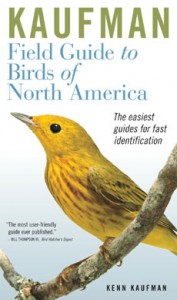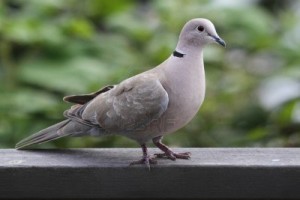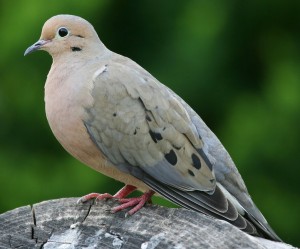So, how did I come up with the name for this blog? The answer goes beyond having a catchy title, though that was important to me so that people’s curiosity might be peaked and so that it would be easily remembered when they wanted to check it out. While that’s true, there are two main reasons how the title came about.
First, in the cover photo of the blog, Evan is literally screaming, “Great blue heron!” as he was excited to see one standing on the shores of Pelican Lake near Orr, MN. That photo captures Evan perfectly. His excitement is palpable. Long before this blog came to be, that photo was seared into my memory because it captures his love of birds so perfectly.
The second, and most interesting reason, how the title came to be has to do with a bird discovery Evan made all on his own. Because of Evan’s interest in birds, we started faithfully feeding the birds at our house. One species of birds that was a regular visitor was the mourning dove. Often we’d have over a dozen bopping around the yard and feeder. Evan spent a lot of time watching all the birds out the window. When he wasn’t doing that, he was flipping through his Kaufman Field Guide to Birds of North America, page by page, over and over. 
One day Evan opened his bird book and excitedly claimed that we had one of these other species of doves that was listed in his field guide. He said it didn’t have spots like the mourning doves. Since he is not yet a reader, he had to ask us the name of any bird he didn’t know in his book. The bird that Evan claimed to see was the Eurasian Collared Dove. In a reversal of “The boy who cried ‘wolf’,” I didn’t believe him at first. I thought he was mistaken. I had never even heard of this dove, let alone seen one. The colored range map in the book did not show Minnesota in its range.
One day when I was outside, I saw a monster-sized dove in the driveway. It was far bigger than all the other doves ambling about. I sneaked inside to grab the binoculars to get a closer look. Sure enough, it was paler in color than the rest and it had the signature black bar on its neck of the Collared Dove. It matched the book’s description perfectly of the Eurasian Collared Dove. I started looking at the range map a little more closely and noticed a dotted line that ran through Minnesota, and the description contained these words, “Native to Old Word. Became established in Florida in the 1980s. Now rapidly expanding range to west and north; has reached Arizona, Montana, New York; likely to colonize much of the continent.” Huh. That dotted line I had taken for granted on first glance had meant they were becoming permanent residents of the great state of Minnesota. Evan was right! I couldn’t believe his attention-to-detail as a five-year-old (see for yourself in the pics below for the difference between a Mourning Dove and a Eurasian Collared Dove). I never would have noticed this dove if it weren’t for Evan. My confidence in his birding ability went way up. From now on, I will trust him when he makes a birding claim. So the title of the blog alludes to the story of the boy who cried “wolf.” But unlike that story where trust was given blindly and then revoked, Evan started with the disadvantage of mistrust and earned my respect and trust as a birder in his own right.
Eurasian Collared Dove
Mourning Dove



Hi Josh,
I discovered your blog while looking at sage-grouse photos on Google. I saw the cover of your father’s monograph and I had to click on the link. The reason I clicked on it was that book has been in my library since I was a child and I continue to use it to this day. In fact, I used a similar photo in a presentation earlier this summer to describe the important work that Montana has done for sage-grouse over the years. I was much like Evan growing up and I am now working for the BLM in Billings, Montana on sage-grouse with two young boys of my own. I am not sure that I ever met your father when I was growing up in Fort Peck, but I do know Bob Eng and Bob Martinka. Please tell your father how important his work continues to be in our efforts on sage-grouse and he might be interested to know that sage-grouse research is continuing today in the same area he worked (along with research on other grassland and sage associated birds). This time investigating the response to changes in grazing regimes. Anyway, thank you for sharing the discoveries you and Evan are making. As I sat at my cubicle in between meetings and phone calls, it made my day to be reminded of the joys I had as a child when I was birding with my father and I look forward to seeing more. If you ever get this far west, please let me know. I would love to show both of you some of my favorite birds.
Hi John,
I can’t tell you what a delight it was to read this comment! I called my dad up right away to have him read it because I knew he would be excited that people are still familiar with his work and reference it to this day. I am also glad the blog brought back fond memories of birding with your dad. My chief goal in going on adventures and doing the blog is to make and preserve memories with my kids.
Regarding a trip west, Evan and I were supposed to go to Montana with my dad this past spring so that Evan and I could get our Greater Sage Grouse lifer. Due to our extreme weather this spring and some other reasons, we had to cancel. We are looking to go next year, though, so I will be in touch. Even though I was born in Montana and have been back several times, I have yet to see this bird my dad spent so much time with.
I love this description of how your son (and then your father, and then the chestnut-sided warbler) drew you into birding. I think it was a Magnolia warbler in our yard during spring migration 2013 that finally got me hooked. Its little black necklace enchanted me. I was later disappointed to find out that I was only likely to see it during migration, as I had honestly never realized that different birds came and went at different times of the year. This is a hobby that gets more and more fun the more you see and the more you know. Happy birding to you and your family and I hope to see you again at the next rare bird sighting! 🙂
Magnolia Warbler is an awesome spark bird.
This hobby is a journey that keeps taking us to new heights, figuratively and literally, as well as putting us in the company of a host of great people. Best wishes, Laura, on your quest to see more birds. And the more birds you see, the more desperate you’ll be to see the rare ones as they come up, so undoubtedly our paths will cross.